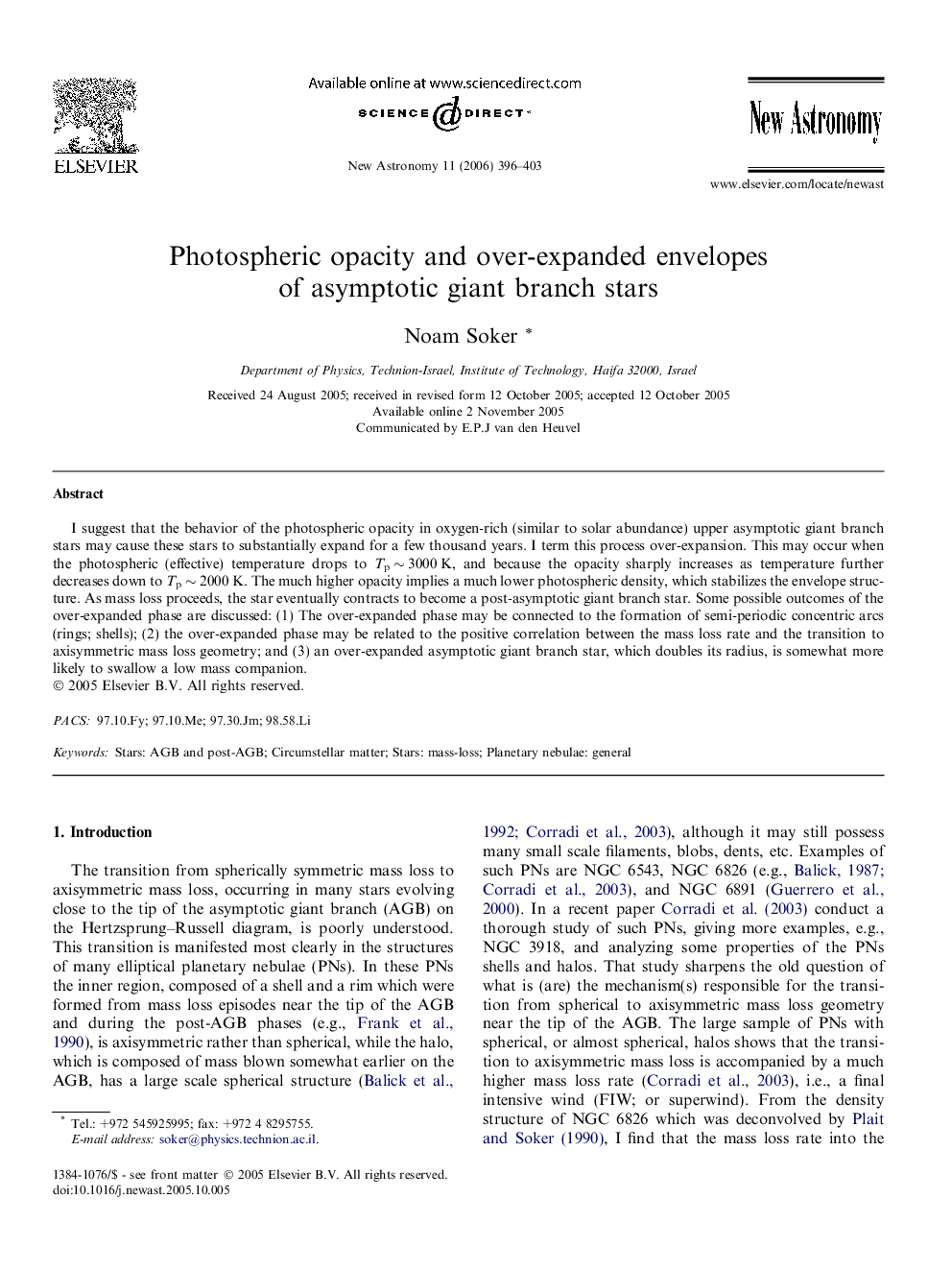| Article ID | Journal | Published Year | Pages | File Type |
|---|---|---|---|---|
| 1779752 | New Astronomy | 2006 | 8 Pages |
Abstract
I suggest that the behavior of the photospheric opacity in oxygen-rich (similar to solar abundance) upper asymptotic giant branch stars may cause these stars to substantially expand for a few thousand years. I term this process over-expansion. This may occur when the photospheric (effective) temperature drops to Tp â¼Â 3000 K, and because the opacity sharply increases as temperature further decreases down to Tp â¼Â 2000 K. The much higher opacity implies a much lower photospheric density, which stabilizes the envelope structure. As mass loss proceeds, the star eventually contracts to become a post-asymptotic giant branch star. Some possible outcomes of the over-expanded phase are discussed: (1) The over-expanded phase may be connected to the formation of semi-periodic concentric arcs (rings; shells); (2) the over-expanded phase may be related to the positive correlation between the mass loss rate and the transition to axisymmetric mass loss geometry; and (3) an over-expanded asymptotic giant branch star, which doubles its radius, is somewhat more likely to swallow a low mass companion.
Keywords
Related Topics
Physical Sciences and Engineering
Physics and Astronomy
Astronomy and Astrophysics
Authors
Noam Soker,
